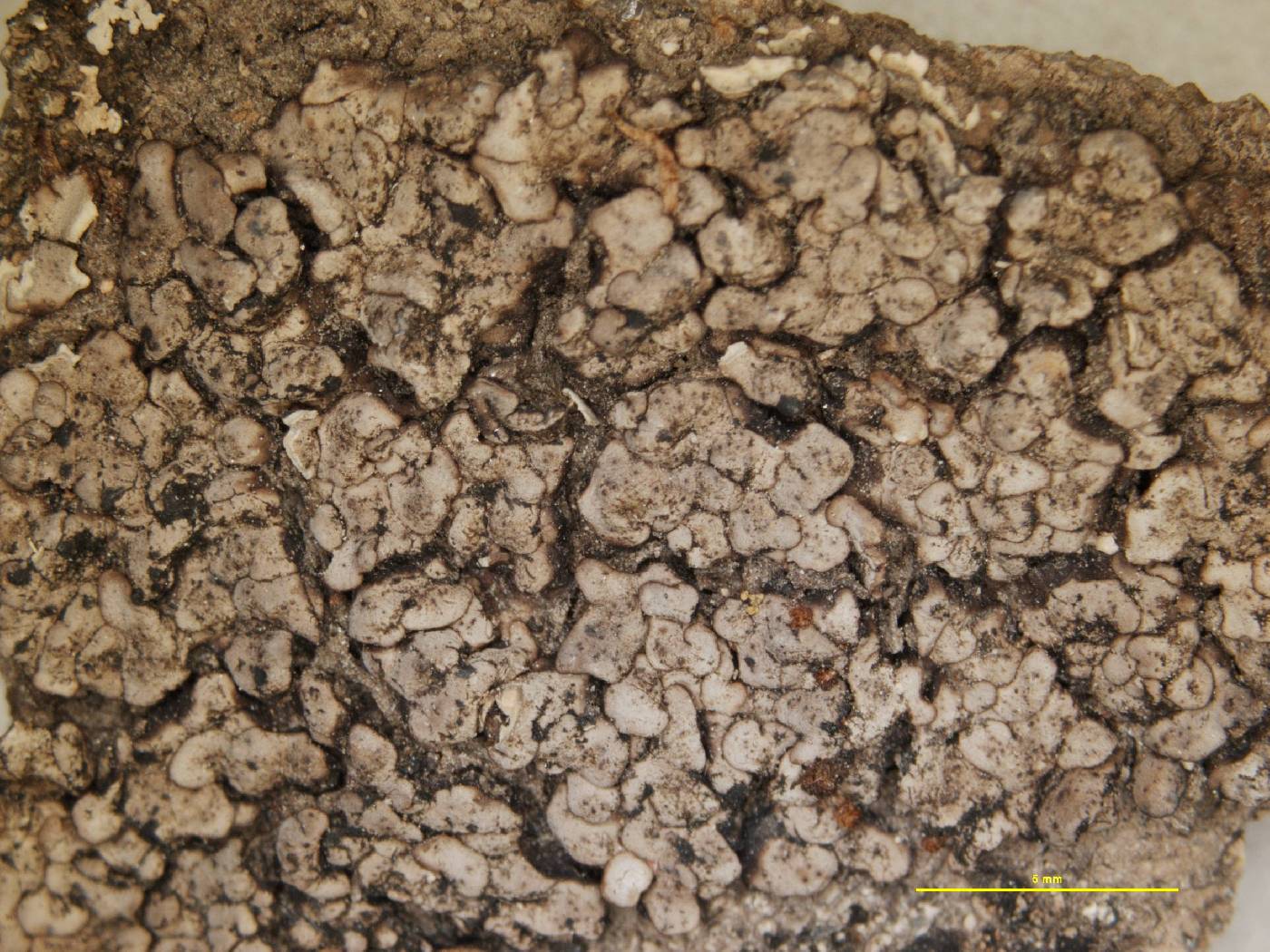
Consortium of Lichen Herbaria
- building a Global Consortium of Bryophytes and Lichens as keystones of cryptobiotic communities -
- Home
- Search
- Images
- Species Checklists
- US States: O-Z >
- US National Parks
- Central America
- South America
- US National Parks
- Southern Subpolar Region
|
|
|
|
Family: Verrucariaceae
[Catapyrenium heppioides (Zahlbr.) J.W. Thomson, moreDermatocarpon heppioides Zahlbr.] |
Nash, T.H., Ryan, B.D., Gries, C., Bungartz, F., (eds.) 2002. Lichen Flora of the Greater Sonoran Desert Region. Vol 1. stipe: paraplectenchymatous, similar in construction as lower cortex, colorless inside, coated by a black pigment layer squamules: c. 2-4 mm broad, 0.4-0.65 mm thick, densely aggregated, adjacent or with overlapping margins, flat or slightly convex or undulate, sparsely divided by cracks; margins: slightly incised or lobate upper surface: greenish to ashy gray upper cortex: very thin (hardly more than 10 µm thick), composed of roundish-angular cells (4-6 µm diam.) medulla: up to more than 250 µm thick, composed of intricately interwoven, filamentous hyphae; algal layer: 100-150 µm thick, discontinuous, interrupted by hyphal bundles; algal cells: in vertical rows, 6-10 µm diam. lower cortex: abruptly delimited, paraplectenchymatous, 40-100 µm thick, composed of conglutinated, hyaline, polygonal cells (6-13 µm diam.); lowermost cell layer: blackening lower surface: black throughout, largely free from the substrate, attached by their basal ends or by stipe-like holdfasts Perithecia: broadly pyriform, up to 0.5 mm wide; exciple: pale brown; periphyses: 35-40 µm long and 2-2.5 µm thick asci: no mature ones seen (only immature ones and numerous free, mature ascospores) ascospores: simple but partly pseudoseptate, oblong ellipsoid to narrowly ovoid, 16-23 x 7-9 µm Pycnidia: laminal, up to 300 µm wide conidia: bacilliform, 3-4 x 1 µm Spot tests: all negative Secondary metabolites: none detected. Substrate and ecology: on sandstone World and Sonoran distribution: southern California, known only from the type locality in the Santa Monica Mountains. Notes: Placopyrenium heppioides has the most distinctly sqaumulous thallus of all species. The squamules are being secondarily divided by few cracks into smaller fragments the margins of which become lobed again. |
Powered by Symbiota















